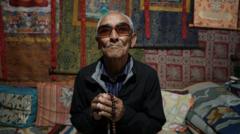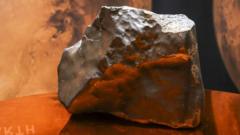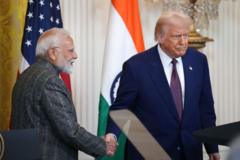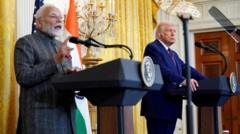As the dazzling cache of nearly 1,800 pearls, sapphires, and rubies linked to the remains of Buddha prepares for auction at Sotheby’s, an ethical quandary looms. These relics were discovered in 1898 in Piprahwa, India, prompting a rich historical discourse on their rightful ownership and the implications of treating sacred artifacts as commodities.
Jewels Tied to Buddha's Remains Spark International Ethical Debate Before Auction
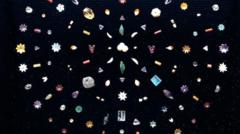
Jewels Tied to Buddha's Remains Spark International Ethical Debate Before Auction
Gems originating from an archaeological find connected with Buddha's remains are set to be auctioned, raising moral concerns on heritage and ownership.
The treasures come from a brick chamber believed to be the resting place of the Buddha, making their significance undeniable. Expert opinions are divided as they discuss the appropriateness of auctioning such sacred relics. Chris Peppé, the great-grandson of the estate manager who excavated the site, explained that while his family considered various options for the jewels, they deemed an auction the most transparent means of transferring ownership.
The pieces, which have remained largely unseen in a private collection for over a century, pose a contentious question of ethics related to cultural appropriation and the monetization of historical artifacts. Observers argue that trading in human remains and sacred objects could set a troubling precedent, particularly as Buddhist leaders voice their concerns regarding the respect for ancestral properties.
While Sotheby’s claims due diligence in the sale, the auction ignites discussions surrounding the significance of cultural heritage, evoking comparisons to high-profile relics such as the Koh-i-Noor diamond. With widespread anxieties about the commodification of spirituality and history, the auction is not merely a sale; it's a spectacle that reflects an ongoing legacy of colonialism and the struggle for cultural preservation. As the sale date approaches, the implications stretch far beyond the auction floor.
Critics insist that these gems should be preserved in a manner that respects their spiritual connections, while others argue that financial restitution or donations are impractical due to the complexities involved. Debating whether the gems are market commodities or sacred relics remains ongoing, with the moral ground vacillating in this high-stakes intersection of culture, history, and modern-day ethics.
The pieces, which have remained largely unseen in a private collection for over a century, pose a contentious question of ethics related to cultural appropriation and the monetization of historical artifacts. Observers argue that trading in human remains and sacred objects could set a troubling precedent, particularly as Buddhist leaders voice their concerns regarding the respect for ancestral properties.
While Sotheby’s claims due diligence in the sale, the auction ignites discussions surrounding the significance of cultural heritage, evoking comparisons to high-profile relics such as the Koh-i-Noor diamond. With widespread anxieties about the commodification of spirituality and history, the auction is not merely a sale; it's a spectacle that reflects an ongoing legacy of colonialism and the struggle for cultural preservation. As the sale date approaches, the implications stretch far beyond the auction floor.
Critics insist that these gems should be preserved in a manner that respects their spiritual connections, while others argue that financial restitution or donations are impractical due to the complexities involved. Debating whether the gems are market commodities or sacred relics remains ongoing, with the moral ground vacillating in this high-stakes intersection of culture, history, and modern-day ethics.




